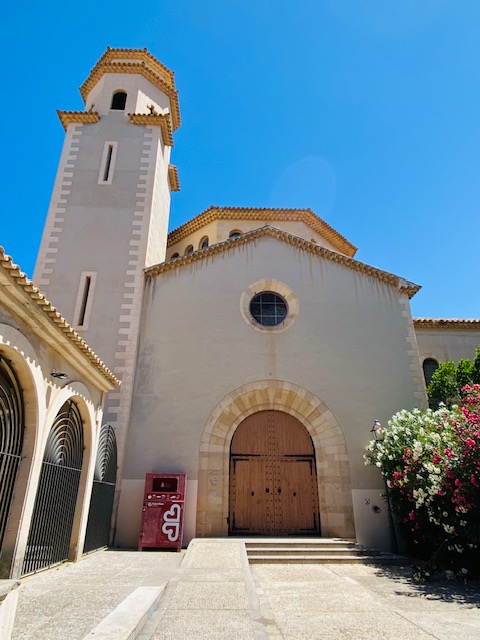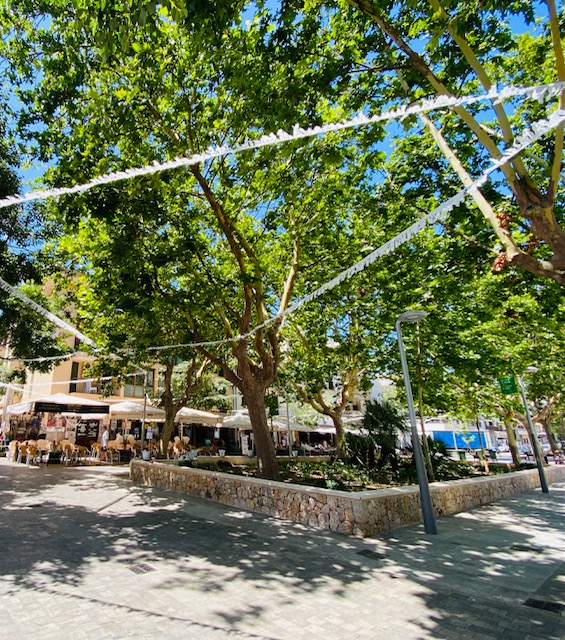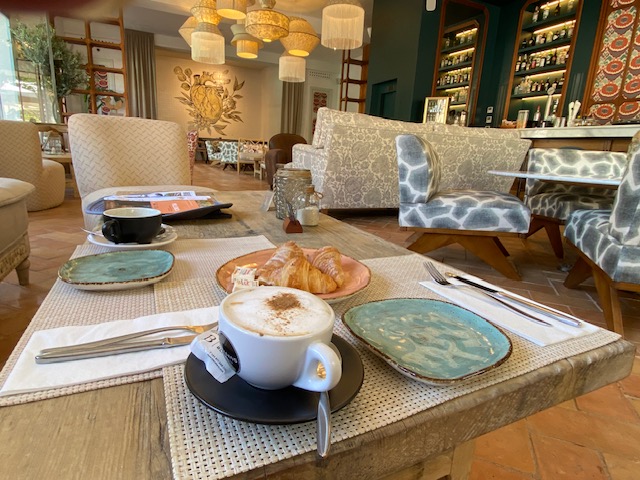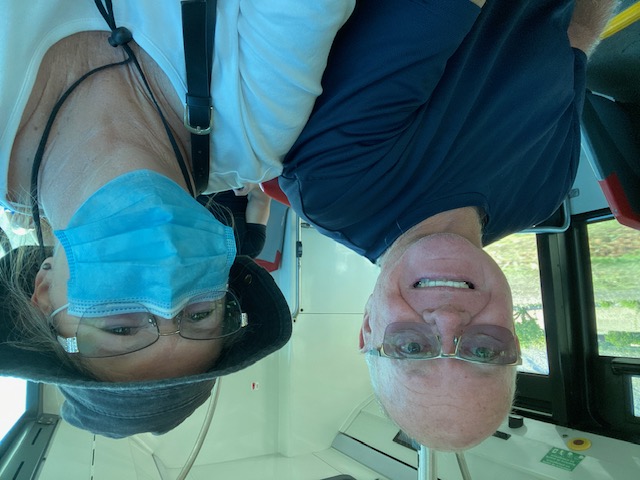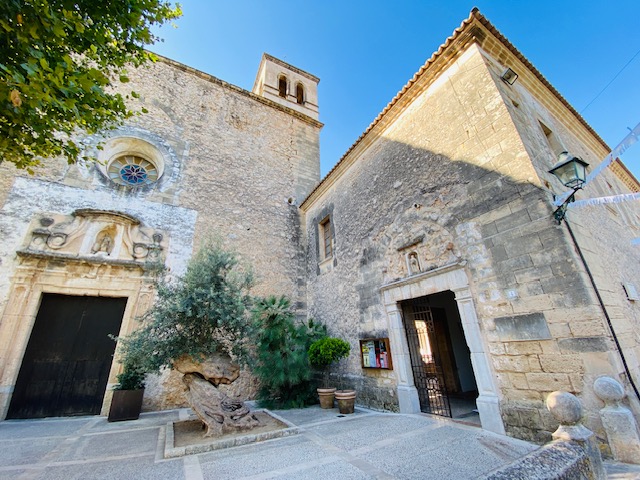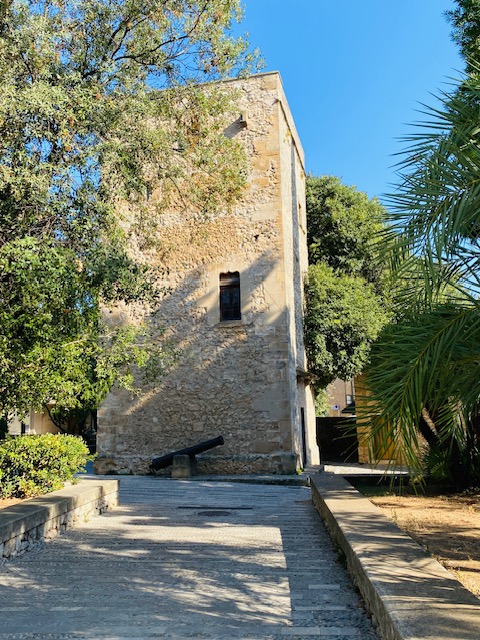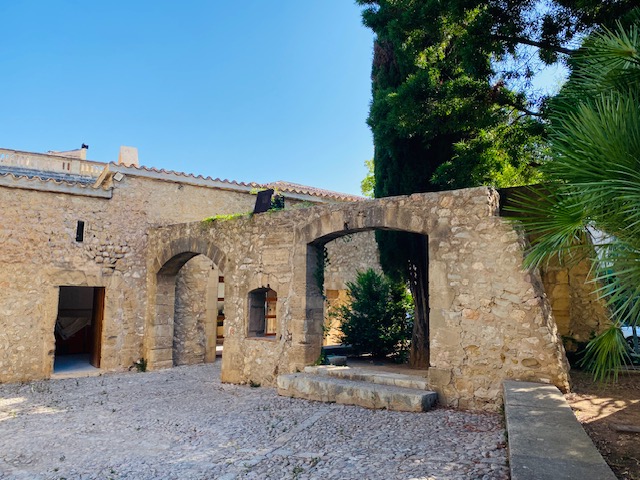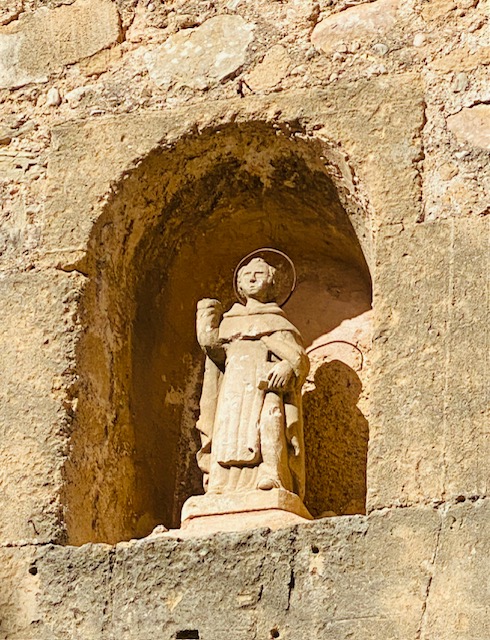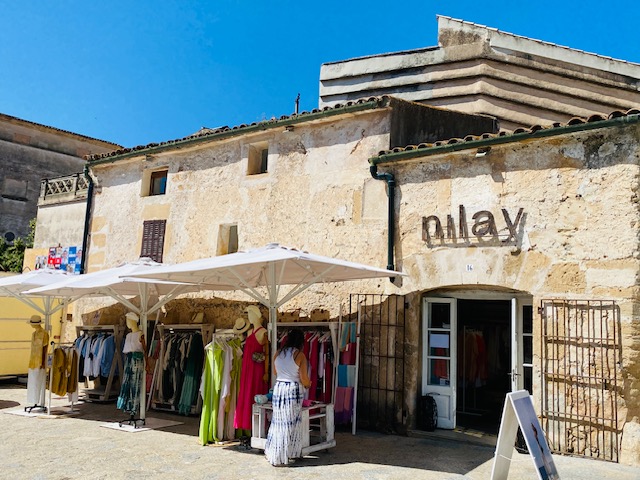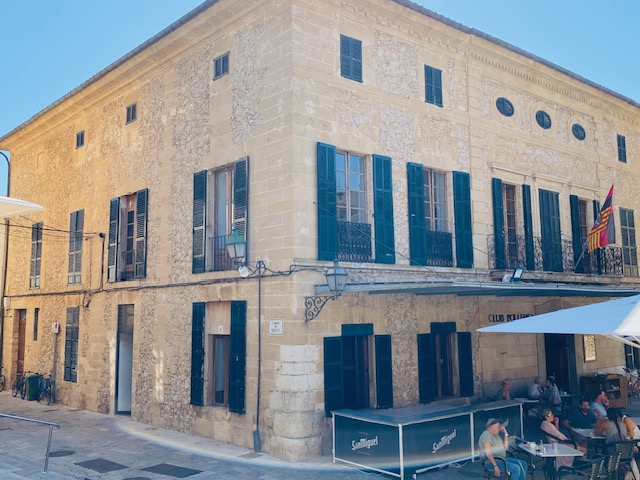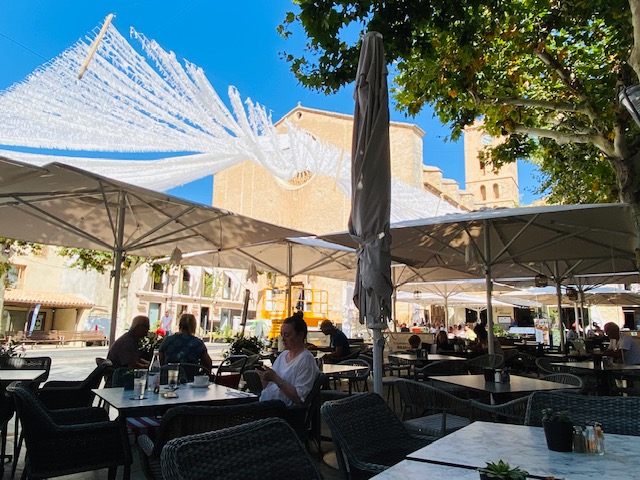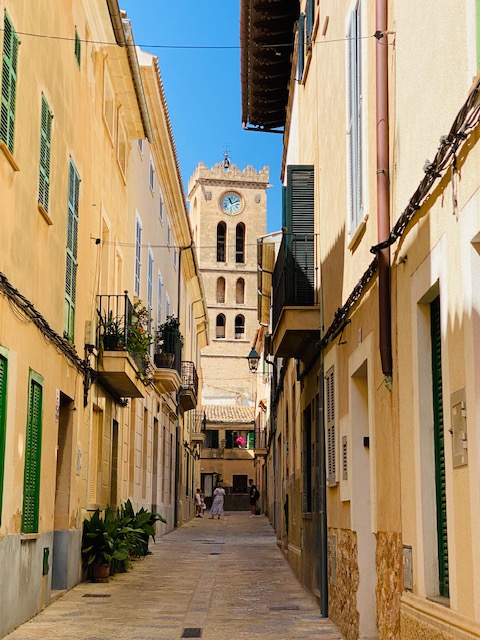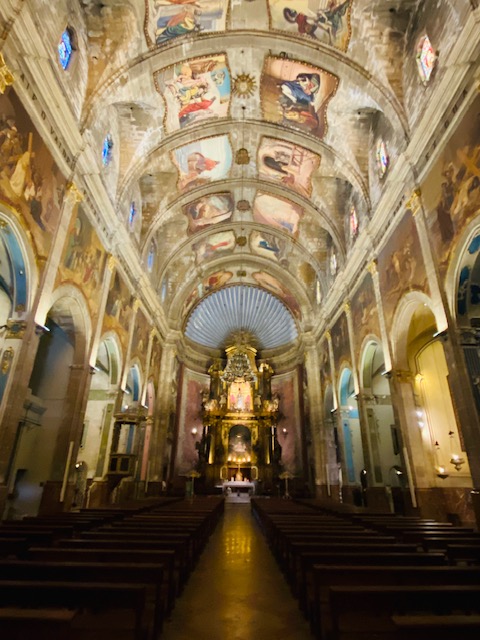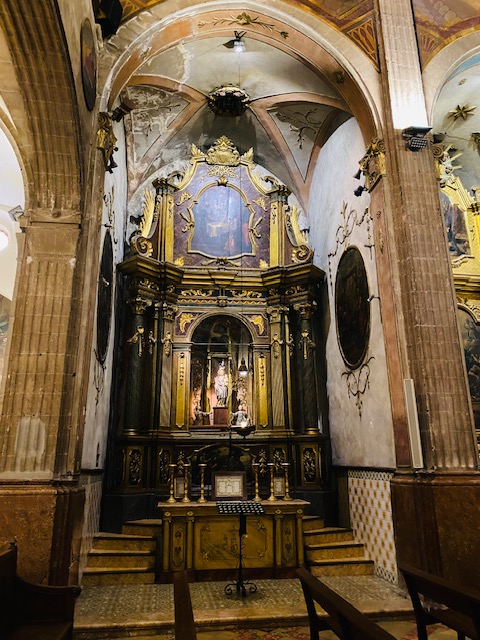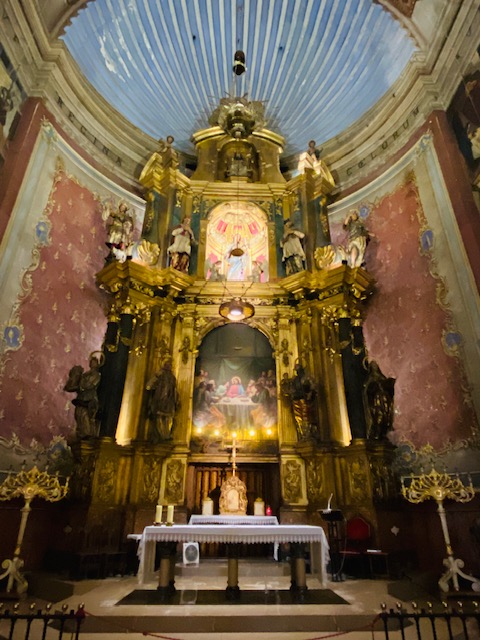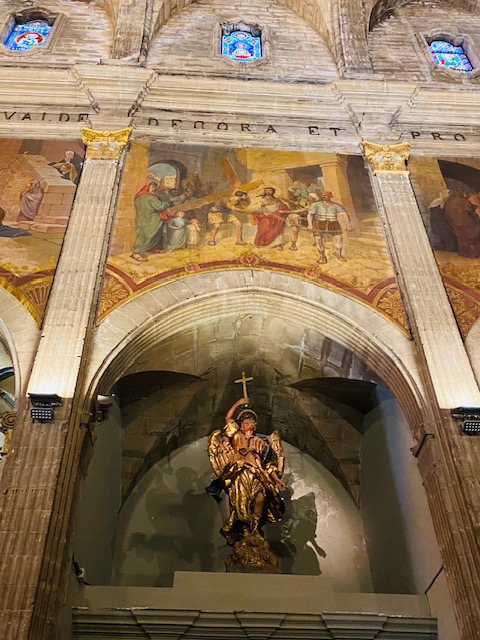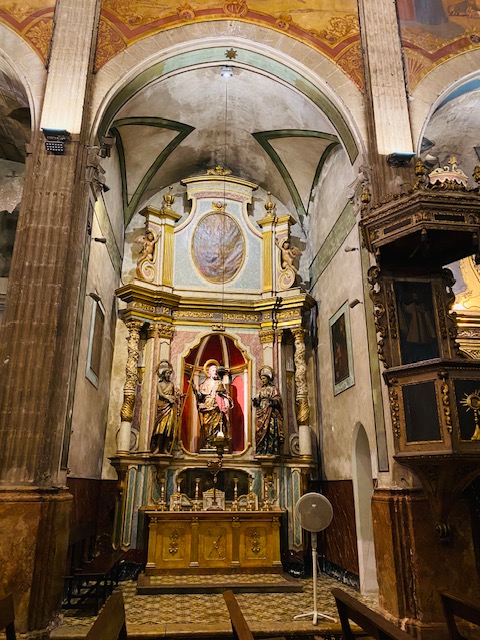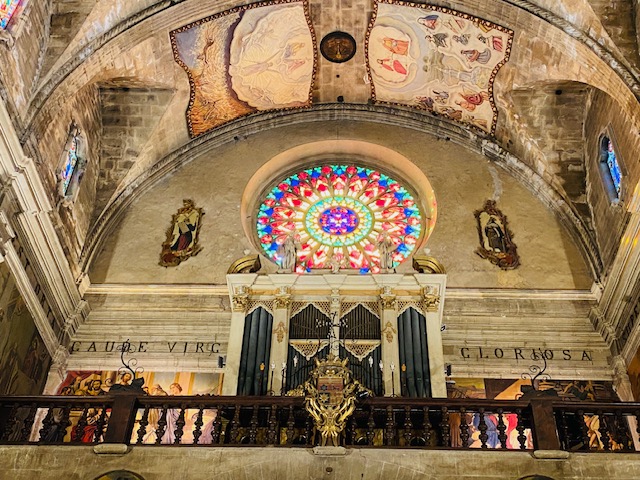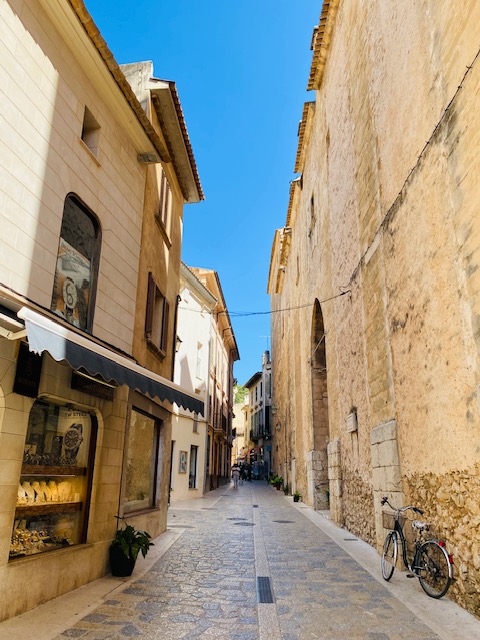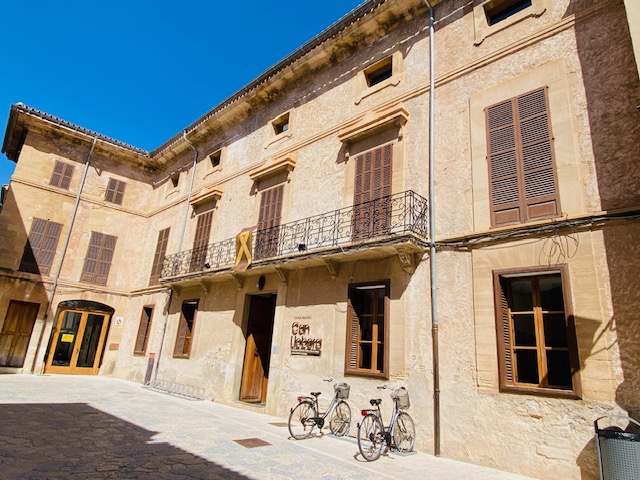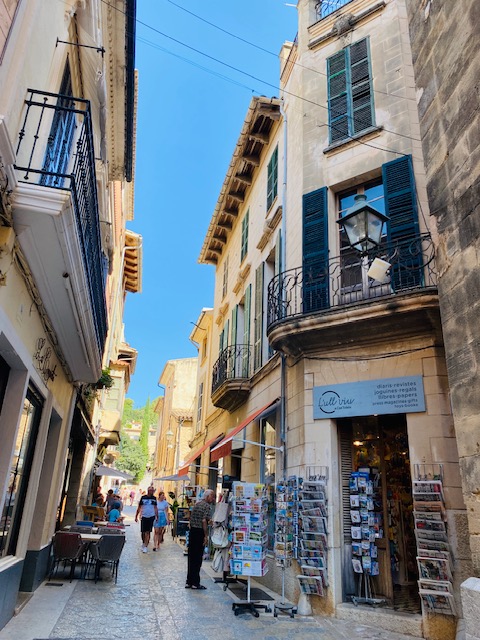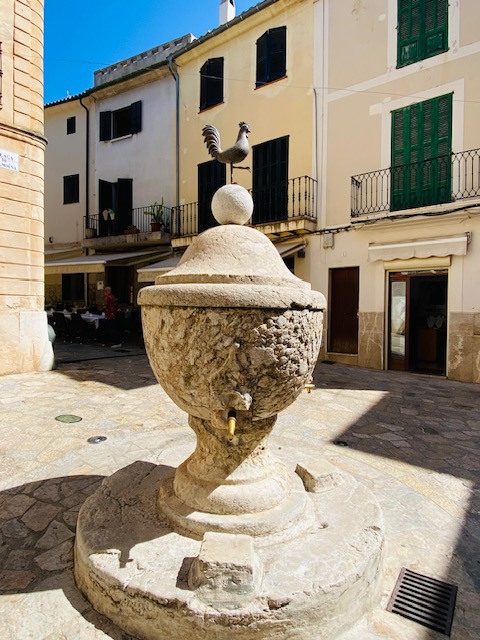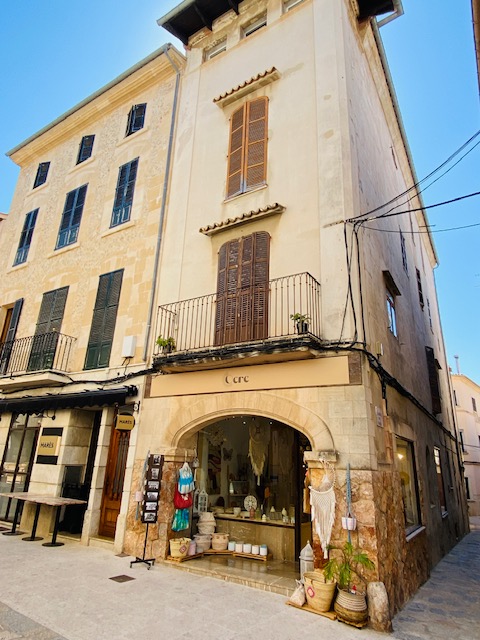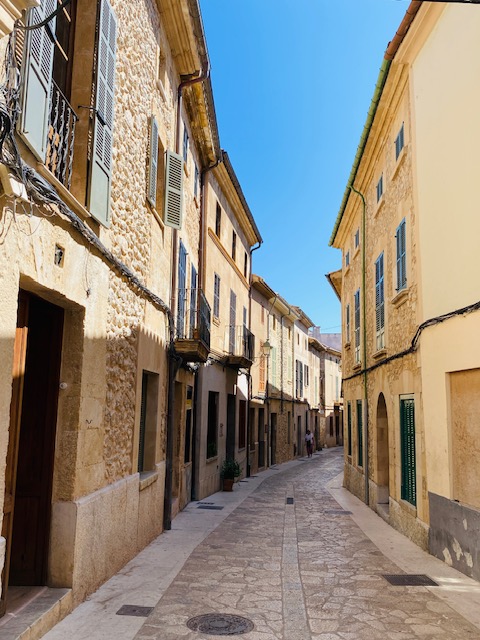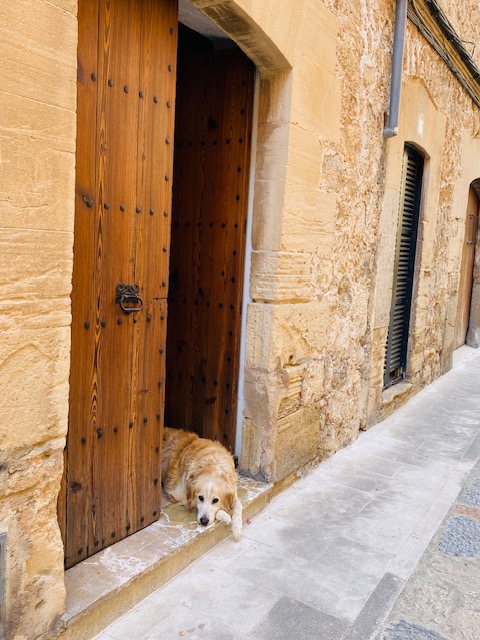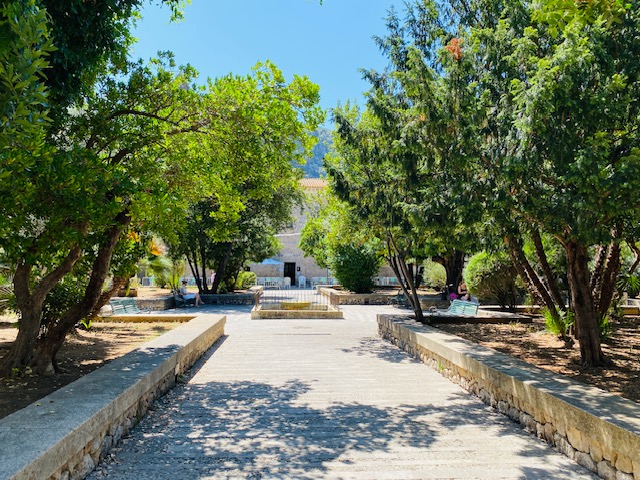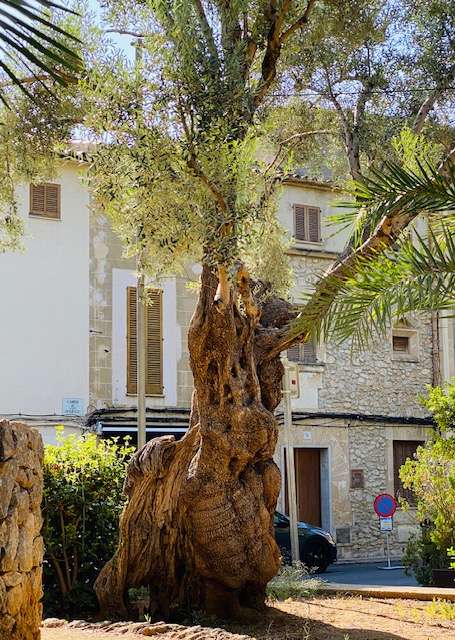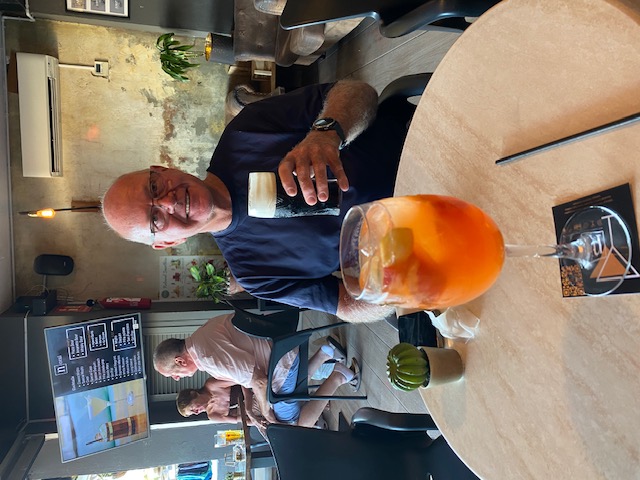Afterwards we strolled to the very pleasant town square, with its huge trees providing much needed shade, and enjoyed a coffee in the very welcoming, comfortable and cool indoor seating area of the Cultural Restaurant; a much quieter atmosphere than the beachfront. Not wanting to return to Paw Paw and the heat, we lingered a little longer than normal.
Stopping to collect a freshly baked baguette, we eventually returned to Paw Paw for a late lunch and definitely welcomed the cool breeze that was blowing, given that Spain has been sweltering for days in temperatures of up to 45C / 113F, with overnight temperatures in many parts of the country not dropping below 25C / 77F. According to newsfeeds, parts of Mallorca reached 37C on Wednesday. However, we’re pleased to have left Italy just in time, where forecasters are warning that the next heatwave, dubbed “Charon”, after the ferryman who delivered souls into the underworld in Greek mythology, will push temperatures up towards 43C / 109F in Rome and a possible 47C / 116F on the island of Sardinia.
Today, to escape the heat on the island of Mallorca, we decided to head for the mountains, the Tramuntara Mountains to be specific, by way of a bus ride to the little town of Pollença, passing through Cala de Sant Vincenç, situated on the northern side of the Formentor peninsula. This northerly municipality in the Tramuntana Mountains stands out for its coastline and geography full of contrasts, from towering rugged mountains, valleys and plains to magnificent cliffs, all of which enticed poets, painters and musicians during the early decades of the 20th Century, including the painter, Hermen Anglada Camarasa, who lived in Pollença until his death.
After our arrival in Pollença, a short walk took us to “Plaça Major” (the main square) in the old quarters, where we found the Baroque-style parish church, “Parròquia de la Mare de Déu del Angels” (Our Lady of the Angels), and the beautiful re-purposed houses of Can Llobera, Ca n’Auli, Ca n’Olesa and Ca n’Aixartell, passing the “Museu de Pollença” (Museum of Pollença), “Torre Desbrull” (Tower of Desbrull), all stunning old buildings, and Sant Domingo Church and Monastery, built In the late 16th / early 17th Centuries by the Dominican Friars.
This small town dates back to the 12th Century when it was first settled by Moors from North Africa. However, from local archaeological discoveries, it is believed that the area was initially inhabited as far back as 2000 BC and by the Romans in 123 BC.
The Moors were driven out by the forces loyal to King James I of Aragon during his occupation of the Island in around 1230 AD, assisted by the loyal Aragon Knights, also known as the infamous Knights Templar. The loyalty of the Knights was rewarded when King James I gave them the town of Pollença. Many examples of their occupation can be seen around the town today, but their most significant contribution was the building of “Parròquia de la Mare de Déu del Angels”.
The Knights Templar left the Island in the 14th Century and, while most of the houses seen today in the town were built in the 17th and 18th Centuries. the church was rebuilt in the current baroque-style in the 18th Century, with around 15 very ornate, beautiful chapels within the building and magnificent frescoes on the walls and ceiling. It was, however, the alter and the stain glass window to the rear of the church that were simply stunning. Unfortunately Elaine was unable to get a decent photograph of the exterior of the church because the town was setting up for the “Festival de Pollença”, a classical music festival that takes place in the month of August each year, but she got a few of the interior and one at a distance of the church tower.
After a coffee at Numero Ocho Brasserie in the shade of the trees on the square, we wondered around the narrow, slate paved streets finding “Plaça de L’Almoina” and “Font del Gall” as we strolled, the latter a fountain bearing a sculpture of a cockerel, the town’s symbol.
Our final stop was “Jardins de Joan March”, where we sat under a tree and chatted to Elaine’s sister, Dianne, primarily to get an update on Elaine’s dad.
Our day ended with a cold beverage on the waterfront, but getting soaked in the dinghy on our return to Paw Paw after the winds shifted to the south, creating quite a fetch, followed by a short, but pleasant phone call to Elaine’s dad, who was delighted to hear from us.
